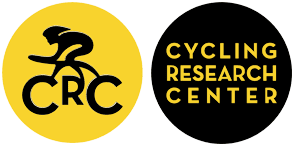Track Cycling Sprinters’ Training Progression Over Three-Month Period
DOI:
https://doi.org/10.28985/1324.jsc.02Keywords:
Track Cycling, Coaching, Sports Performance, Performance ModellingAbstract
There is a paucity of data on the progression of track cycling sprinters, and particularly the evolution of training and performance over a training cycle or season. Following our prior research showing strong relationships between sprint cycling power and endurance cycling power, we compared these relations over a 3-month period building towards a key event where maximal 30-s power was achieved. Our hypothesis is large improvements in power would come from training either for sprint maximal power or sprint maximal capacity, and this would be reflected in the data. A total of publicly available 25 datasets, over a 3-month period were used and broken into 1-month blocks. These data were plotted against the line of best fit for 30-s and 2-min power to assess if training towards the line led to better 30-s power, in contrast to focusing only on peak power. We observe the best performances came from riders who start below the 30-s vs 2-min power line of best fit, with greater capacity and ability to ride fast over a sprint series, and progressing towards focusing on specific power in the final block leading into a competition. These results support the hypothesis of combined capacity and power training based on rider-specific relationship to the line of best fit between these measures versus a strictly maximal power training focus.
Downloads
Published
How to Cite
Issue
Section
Copyright (c) 2024 Journal of Science and Cycling

This work is licensed under a Creative Commons Attribution-NonCommercial-NoDerivatives 4.0 International License.
Authors contributing to Journal of Science and Cycling agree to publish their articles under a Creative Commons CC BY-NC-ND license, allowing third parties to copy and redistribute the material in any medium or format, and to remix, transform, and build upon the material, for any purpose, even commercially, under the condition that appropriate credit is given, that a link to the license is provided, and that you indicate if changes were made. You may do so in any reasonable manner, but not in any way that suggests the licensor endorses you or your use.
Authors retain copyright of their work, with first publication rights granted to Cycling Research Center.






